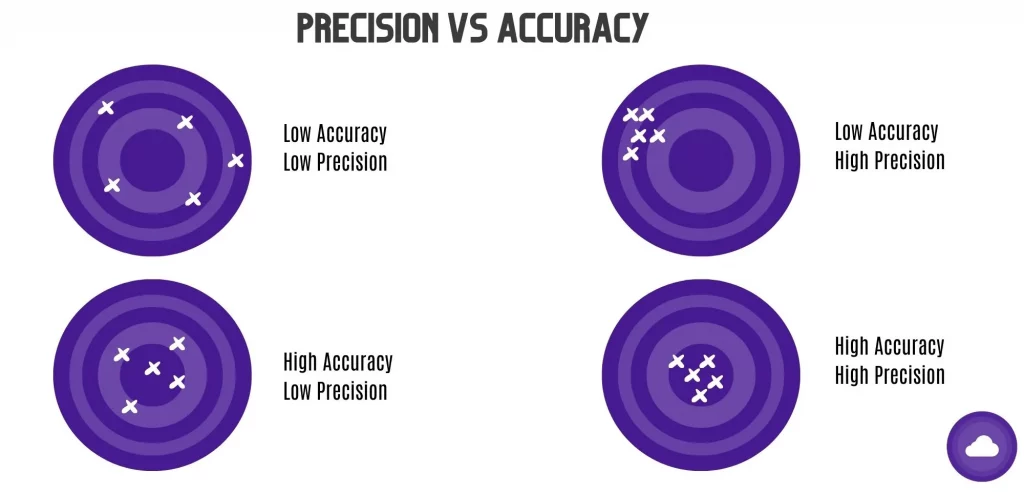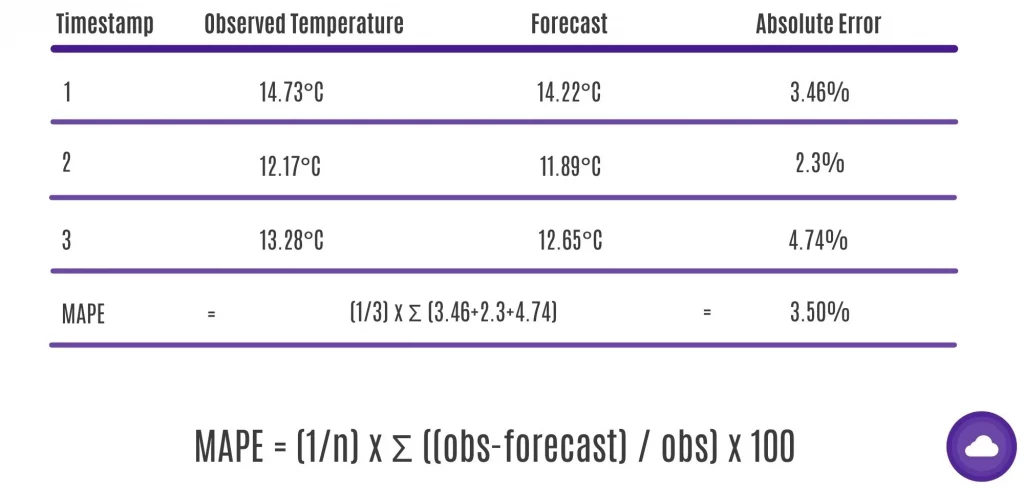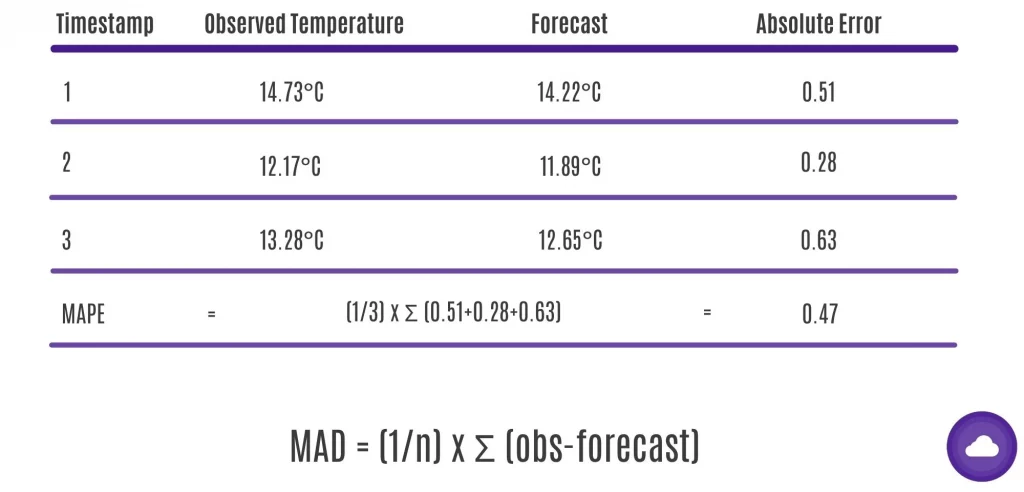In weather forecasting, accuracy is measured similarly to forecasts in many different sectors. This means that specific statistical measurements determine the accuracy of weather forecasts. Calculating forecast accuracy gives an idea of how to proceed with the next forecasts. Let's look at what "accuracy" and "precision," which are often confused, are.

Accuracy vs Precision
Accuracy
Accuracy measures how close the result is to the actual value you were trying to achieve. In other words, it’s how closely you hit what you’re aiming for. Whether that’s a strategic goal or a personal win, high accuracy is when you land directly on your target value. Low accuracy is when you’re way off the mark. You can determine accuracy after a single event, although repeatability will be critical to determining if this can be maintained as a long-term success.
Precision
Precision measures how close your results are to one another. While accuracy can be used in one instance, precision will be measured over time. This is because precision requires repeatability to determine the degree of closeness between each set of measurements. High precision is when your results are similar to each other, while low precision is when they’re all over the map.
Now that we understand what accuracy is and how it differs from precision, let's look at why measuring accuracy is necessary.
Why Measure Accuracy
- Improving the Forecasting Process: Tracking forecast accuracy can improve the overall forecasting process by helping businesses learn when they can make adjustments to a forecast to increase its accuracy.
- Benchmarking Forecasts: Consistently tracking accuracy can provide companies with benchmarks to measure their forecast accuracy with others in their industry.
How to Measure Weather Forecast Accuracy
When measuring weather forecast accuracy, the most important thing is to have the observed weather data. Although there are many methods you can choose to measure forecast accuracy, there are two common methods that can provide you with valuable insights based on your data. These two methods are:

Mean Absolute Percentage Error (MAPE)
The mean absolute percentage error (MAPE) measures the average of forecast errors in percentages. It's a helpful accuracy metric to use because many people can understand forecast accuracy in terms of percentages. For example, a MAPE of 3.50% means there was a 3.50% difference between the actual and projected data. Typically, a lower MAPE indicates a higher forecast accuracy.

Mean Absolute Deviation (MAD)
The mean absolute deviation (MAD) is similar to the MAPE, except it measures the average of the forecast errors in units. This can be a good measurement to use when you're comparing the actual numbers and projected forecasts for a single item.
Calculating forecast accuracy for three-time steps appears quite simple, doesn't it? Advancing technology and increasing computing power have made weather forecasting more accurate than ever. However, the chaotic nature of the atmosphere remains a major obstacle to the precision of weather forecasting. To overcome this obstacle, Buluttan is delighted to offer weather solutions specially designed for every industry, powered by high-resolution and AI.
Buluttan: High Accuracy Weather Intelligence Partner
Buluttan Weather Intelligence offers reliable and timely meteorological information for your industry through high-accuracy and high-resolution hyper-local weather forecasts, with models that reach up to 100m resolution for increased safety.
Buluttan API provides meteorological parameters at regular intervals and allows verification of past extreme weather events for insured products damaged in accidents.
Buluttan SkyWatch provides a web-based and mobile-compatible severe weather control panel for your field team managing operations.
Buluttan Map Layer informs drivers and dispatchers of on-road weather risks in real-time, enabling proactive approaches in logistics operations.







